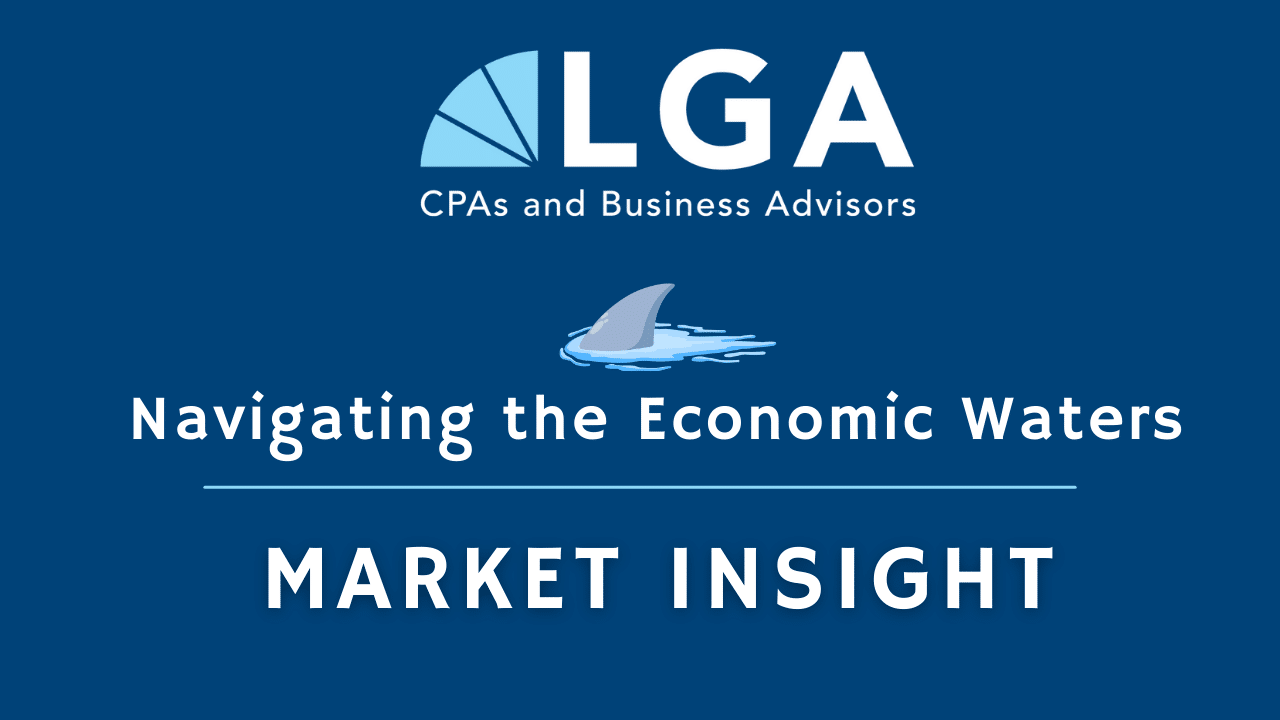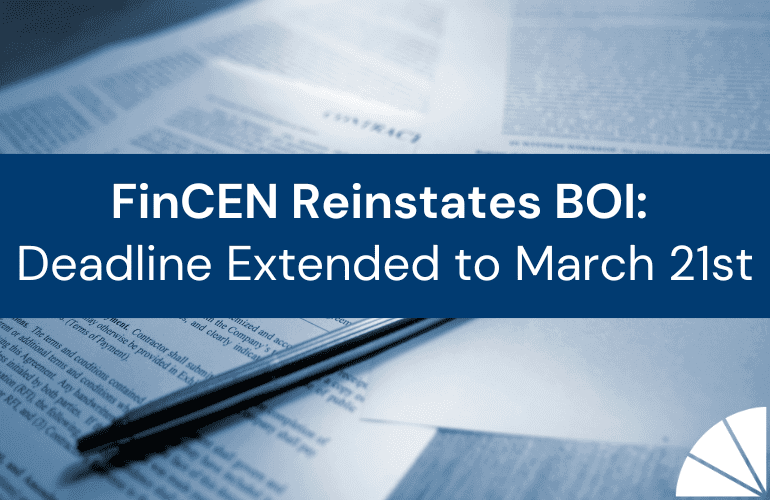
“Martin, it’s all psychological. You yell, “Barracuda,” everybody says, “huh, what?” You yell “Shark,” we’ve got a panic on our hands ….” Mayor Vaughn, “Jaws”
We are always in an economic cycle. The problem is we never know precisely where we are in the cycle until time passes. It seems like the press lies in wait to declare a recession to, in part, reap the click-bait that comes with such a declaration. The reality is a recession is not a moment in time. Rather, entering and exiting a recession spans over varied lengths of time and has occurred regularly for centuries. So, how can we link Jaws with our current economic condition in our latest Business Advisory Services Market Insight issue? Think of your company, your firm, and your personal financial position as merely floating on the peaks and troughs of an economic cycle. You may sense where you may be in an economic cycle and what may be lurking in the depths below, but you never know with certainty until after the fact.
In prior editions of Business Advisory Services Market Insight, we shared our suspicion that there were leading economic indicators that the economy was turning. We focused on studying inflation, supply chain disruption, consumer spending habits, banking and credit trends, the equity and debt markets, and primary sourcing from clients, collaborators, and industry experts. Recent developments appear to be validating our suspicions that these leading indicators were indeed signaling early signs of an impending downturn.
.“I think I am familiar with the fact that you are going to ignore this problem until it swims up and bites you in the ass.” Hooper
Economic perceptions oftentimes drive eventual realities and behaviors more than the underlying data. For this reason, one can easily find wishful articles that fuel hope for 0% interest rates, continued frothy real estate markets, and banking data that suggests the worst may be behind us and that corporations can generate sustained profit growth despite higher borrowing costs and limited labor pools. With increases in just about every conceivable cost category, buyers appear to be scrutinizing purchasing decisions for the first time in a long time.
So, what is driving our “ocean half-empty” mindset?
Downward Trends in Banking. According to Yahoo Finance, bad loans are finally becoming a problem for regional banks. The article reports that “of 18 regional banks analyzed by Yahoo Finance with assets ranging from $50 billion to $250 billion, 15 reported jumps in nonperforming loans when compared to the same year-ago period. The average rise was 80% more than the third quarter of 2022, and up 8% when compared to the second quarter of this year. Charge-offs — a measure of unpaid debts written off as losses — also rose at 15 of the 18 banks compared with the same year-ago period.”
As we have reported for more than a year, when nonperforming loan growth outpaces charge-offs, there is growing stress on many bank balance sheets that restrict their capacity and appetite to lend. Less available lending can create a ripple effect for those who need to borrow to sustain their operations, fund an acquisition, or develop a real estate project. As the data unfolds, keep a keen eye on how deeply the pain is being felt amongst global banks, regional banks, community banks, and credit unions.
Downward Trends in Commercial Real Estate. According to Reuters, commercial real estate loans are showing signs of deterioration. The article states that “building owners that borrowed money to finance their properties are being squeezed by high interest rates and vacant offices as workers opt to work from home. Weak demand for offices could trigger a wave of borrowers to default on their loans and put pressure on banks and other lenders, which are hoping to avoid selling loans at significant discounts.” Further, “… banks are trying to avoid selling their worst properties because that’s going to force them to take a larger write-off, and because every property that’s sold becomes a comparable sale for the appraisers that value the properties.”
Concerns of an eventual real estate correction now appears to be more likely than many had expected in prior months. Prior corrections have taught us that the economy needs time and healing in order to drive our next upturn.
Downward Trends in Consumer Credit Quality. According to VantageScore, overall consumer delinquencies increased to a new 12-month high across all past due categories. In fact, “Delinquencies have continued their overall trajectory upward since May, a clear sign that consumers are feeling the pressure of inflation and rate hikes …. The month-over-month increase we’ve seen over the last four months in early-stage delinquencies has led to a consistent and corresponding rise in later-stage delinquencies in the following month. Lenders should, therefore, be cautious as they head into the holiday shopping season, as new originations could invite increased credit risk.
Reduced consumer credit quality puts a damper on new borrowings and purchasing. While many of these broad macroeconomic drivers may appear to be independent from the other, in reality, these and many more factors contribute to the overall health of our economic and financial systems.

“All right, come on! Show the tank. Show me the tank.” Chief Brody
Rather than awaiting definitive economic declarations, find solace that we are always in an economic cycle and we can generally sense whether we are closer to a peak versus a trough. As a rule of thumb, rather than pouring over economic data, walk through your favorite retailer, your favorite car dealer, your favorite supermarket or your favorite Home Depot. Assess the foot traffic, what people are purchasing, note price reductions or time on the market on houses for sale, observe more space for lease signs and less we are hiring signs, and sense the general sentiment of both workers and consumers. Your eyes and ears are the best primary source for the state of your local economy.
So, short of donning a Shark-Week-approved steel mesh suit for you and your business, how does one avoid becoming chum in the current environment?
- Develop various forecasted scenarios to represent a host of outcomes in order to quantify how resilient or vulnerable your company may be.
- Monitor key ratios that lenders and stakeholders will hone in on so that you can initiate proactive discussions should results fall short of expectations.
- Evaluate all fixed and variable costs and determine which levers to pull should declining revenues or rising costs threaten viability.
- Familiarize yourself with loan document key terms, covenants, events of defaults, rights, and remedies.
- Create contingency plans to access alternative sources of lending should a new lender be immediately needed.
- Aggressively track receivable quality, inventory days on hand, and the timing of scheduled payments to vendors.
- Derive a strategy, where possible, to pass along cost increases to your clients to help maintain profit margins in an inflationary environment.
- Opportunistically acquire competitors or evaluate the sale of your company.
The good news is that you do not have to prepare to face economic uncertainty alone. We have advised hundreds of entities through several economic cycles. We take immense pride in empowering companies to proactively embrace and thrive during uncertain times. If you are interested in learning more about how you can prepare to fight for your company’s health, safety, and prosperity, reach out to the LGA Business Advisory Team.
Thank you,
LGA BAS Team





